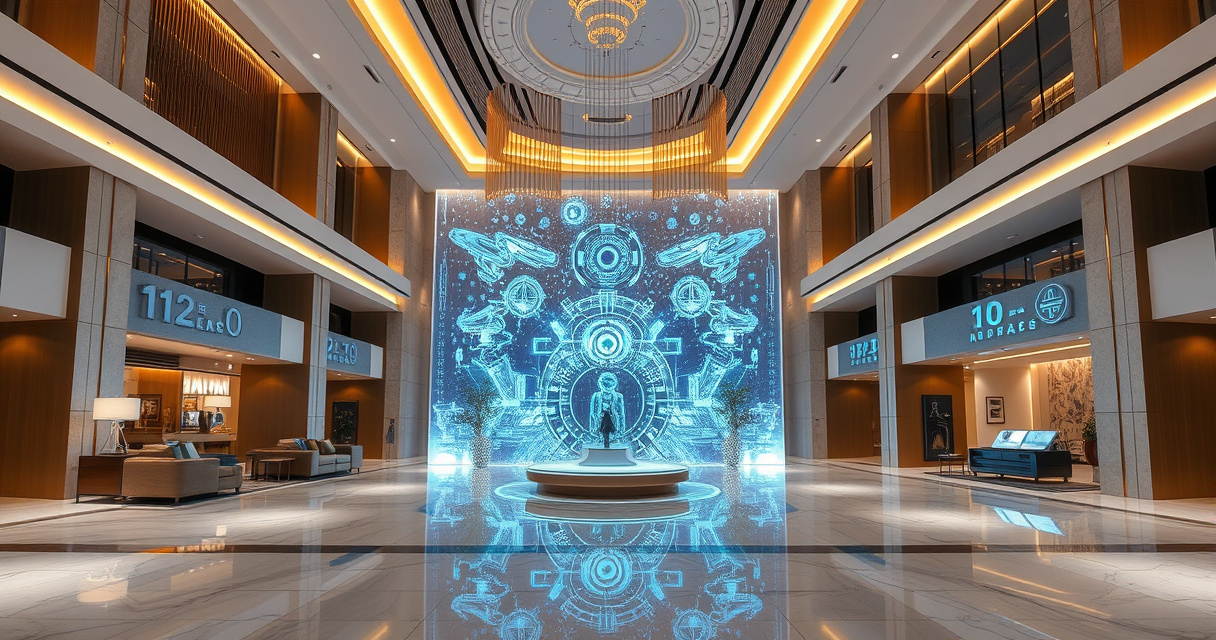The Future of Hotel Branding: AI-Powered Design Revolution

If you visit my LinkedIn or website, one theme stands out: creating the hotels of the future. But what does that really mean? Two years ago I started urging hotel developers in my network to explore digital twin technology and AI to optimize properties—when most still doubted AI’s value in hospitality. Since I was 18, I’ve been designing forward-thinking hotel concepts for the world ahead. Today, through BrandClave, we’re turning those ideas into reality. Developers have been asking me the same, essential question: How do we create brands that don’t just survive the next decade, but lead it?
The AI Design Revolution: What Hotel Developers Need to Know
Most "AI in hotels" talk stops at chatbots and automated check-ins. That's yesterday's news. The revolution happening right now is design intelligence—AI shaping brands, spaces, and operations before you break ground.
Digital Twins for Brand Development
Before you invest a single dollar in construction, we can simulate guest flows, arrival rituals, and F&B demand patterns. Think of it as a wind tunnel for hospitality concepts—test everything, optimize relentlessly, then build with confidence.
Developer Impact: I've seen developers save $2.5 million in redesign costs by identifying flow issues in the digital twin phase. Source: Matterport
Generative Identity Systems
Traditional branding creates static guidelines. AI-powered branding creates adaptive identity systems that evolve with your properties while maintaining unmistakable brand recognition.
Your logo, color palette, and motion graphics dynamically adjust for different markets, seasons, or guest demographics—all while staying authentically you.
Operational Intelligence Integration
The most sophisticated developers are already using AI to forecast staffing needs, inventory optimization, and predictive maintenance schedules. But here's what they're missing: these operational insights should inform brand decisions from day one.
Why build a spa if the data shows your target demographic values fitness over relaxation? Why create intimate dining spaces if the flow analysis predicts guests prefer communal experiences?
Case Study: The Developer Who Got It Right
I recently worked with a developer planning a 200-room luxury property in Miami. Traditional branding would have cost $800K and took 8 months. Using our AI-powered approach, we delivered a complete brand ecosystem in 7 days for a fraction of the price.
The Real Win:
The digital twin analysis revealed that shifting the lobby orientation by 15 degrees would increase guest dwell time by 40%, directly impacting F&B revenue. That single insight, discovered before construction, projected an additional $1.2M in annual revenue.
BrandClave's Future-Ready System: Your Competitive Edge
This is exactly why BrandClave's 7-day brand creation system isn't just fast—it's future-adaptive. We're not just building brands for today's market; we're architecting identities that will thrive in 2030's orchestrated-trip landscape.
Our AI-powered design intelligence creates brands that are:
- Inherently scalable across multiple properties and markets
- Measurable with real-time performance tracking
- Built for the operator-light future where human creativity amplifies machine precision
Every day you delay adopting AI-integrated branding is a day your competitors get further ahead. The properties that will dominate 2030 are being designed today.
Ready to Build the Future?
The hotel developers who reach out to us aren't just building properties—they're creating the hospitality landmarks of tomorrow. They understand that in a world where AI can design, analyze, and optimize faster than any human team, the winning strategy isn't to compete with the technology—it's to harness it.
If you're developing a property that needs to stand out in 2025 and beyond, let's talk.
Because the future of hotel branding isn't coming—it's here. And it's time to build it.